My
List |
Addition Date
|
Target
|
Mission
|
Instrument
|
Size
|

|
2000-04-19 |
Io
|
Galileo
|
Solid-State Imaging
|
769x774x3 |
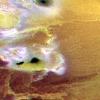
|
-
PIA02534:
-
Terrain near Io's South Pole, in Color
Full Resolution:
TIFF
(1.812 MB)
JPEG
(84.44 kB)
|

|
2000-05-18 |
Io
|
Galileo
|
Solid-State Imaging
|
900x689x3 |
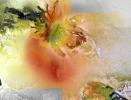
|
-
PIA02535:
-
Culann Patera, Io, in False Color
Full Resolution:
TIFF
(2.192 MB)
JPEG
(105.6 kB)
|

|
2000-05-18 |
Io
|
Galileo
|
Solid-State Imaging
|
1152x758x1 |
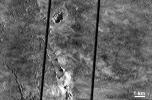
|
-
PIA02536:
-
1997 Lava Flows Near Pillan Patera, Io
Full Resolution:
TIFF
(366.3 kB)
JPEG
(169.6 kB)
|

|
2000-05-18 |
Io
|
Galileo
|
Solid-State Imaging
|
1152x214x1 |

|
-
PIA02537:
Lava Flows at Zamama, Io
Full Resolution:
TIFF
(75.33 kB)
JPEG
(39.4 kB)
|

|
2000-05-18 |
Io
|
Galileo
|
Solid-State Imaging
|
1152x443x1 |
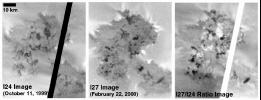
|
-
PIA02538:
-
Changes Observed in Just 4.5 Months at Prometheus, Io
Full Resolution:
TIFF
(162.1 kB)
JPEG
(69.06 kB)
|

|
2000-05-18 |
Io
|
Galileo
|
Solid-State Imaging
|
1152x491x1 |
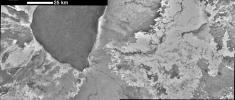
|
-
PIA02539:
-
Bright Lava Flows at Emakong Patera, Io
Full Resolution:
TIFF
(247.5 kB)
JPEG
(105.2 kB)
|

|
2000-05-18 |
Io
|
Galileo
|
Solid-State Imaging
|
381x900x1 |

|
-
PIA02540:
-
Rifting at Hi'iaka Patera, Io?
Full Resolution:
TIFF
(156.2 kB)
JPEG
(61.54 kB)
|

|
2000-05-18 |
Io
|
Galileo
|
Solid-State Imaging
|
881x778x3 |
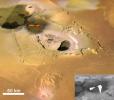
|
-
PIA02545:
-
Eruption at Tvashtar Catena, Io, in Color
Full Resolution:
TIFF
(1.946 MB)
JPEG
(86.57 kB)
|

|
2000-05-31 |
Io
|
Galileo
|
Solid-State Imaging
|
800x800x3 |
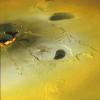
|
-
PIA02550:
-
Ongoing Volcanic Eruption at Tvashtar Catena, Io
Full Resolution:
TIFF
(2.248 MB)
JPEG
(81.64 kB)
|

|
2000-05-31 |
Io
|
Galileo
|
Solid-State Imaging
|
1152x605x1 |
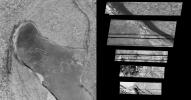
|
-
PIA02551:
-
Snapshots of Chaac: Io's Calderas Up Close
Full Resolution:
TIFF
(215.1 kB)
JPEG
(89.51 kB)
|

|
2000-05-31 |
Io
|
Galileo
|
Solid-State Imaging
|
876x900x3 |

|
-
PIA02552:
-
Stereo Image of Tvashtar Catena, Io
Full Resolution:
TIFF
(1.615 MB)
JPEG
(96.08 kB)
|

|
2000-05-31 |
Io
|
Galileo
|
Solid-State Imaging
|
506x411x3 |
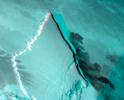
|
-
PIA02553:
-
Stereo Image of Zal Patera and Neighboring Mountain, Io
Full Resolution:
TIFF
(532.5 kB)
JPEG
(23.59 kB)
|

|
2000-05-31 |
Io
|
Galileo
|
Solid-State Imaging
|
643x566x3 |
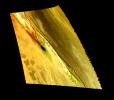
|
-
PIA02554:
-
Colorized View of Zal Region, Io
Full Resolution:
TIFF
(564.4 kB)
JPEG
(39.15 kB)
|

|
2000-05-31 |
Io
|
Galileo
|
Solid-State Imaging
|
875x900x1 |

|
-
PIA02555:
-
Shamshu Mons and Patera, Io
Full Resolution:
TIFF
(251 kB)
JPEG
(83.46 kB)
|

|
2000-05-31 |
Io
|
Galileo
|
Solid-State Imaging
|
800x600x1 |
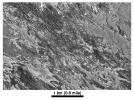
|
-
PIA02556:
-
Highest-Resolution Picture of Io
Full Resolution:
TIFF
(471.2 kB)
JPEG
(105.6 kB)
|

|
2000-05-31 |
Io
|
Galileo
|
Solid-State Imaging
|
618x850x1 |

|
-
PIA02557:
-
Lava Flows and Ridged Plains at Prometheus, Io
Full Resolution:
TIFF
(460.9 kB)
JPEG
(76.71 kB)
|

|
2000-10-26 |
Io
|
Galileo
|
Solid-State Imaging
|
1152x899x1 |
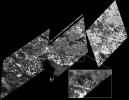
|
-
PIA02562:
-
Very High Resolution View of Io's Surface
Full Resolution:
TIFF
(292 kB)
JPEG
(137.4 kB)
|

|
2000-10-26 |
Io
|
Galileo
|
Solid-State Imaging
|
782x752x1 |
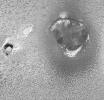
|
-
PIA02563:
-
Camaxtli Patera, An Active Volcanic Center on Io
Full Resolution:
TIFF
(638.4 kB)
JPEG
(169.6 kB)
|

|
2000-10-26 |
Io
|
Galileo
|
Solid-State Imaging
|
900x750x3 |
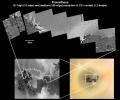
|
-
PIA02564:
-
Io's Prometheus Volcano at Various Resolutions
Full Resolution:
TIFF
(739.5 kB)
JPEG
(93.19 kB)
|

|
2000-10-26 |
Io
|
Galileo
|
Solid-State Imaging
|
889x766x3 |
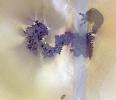
|
-
PIA02565:
-
Sources of Volcanic Plumes Near Prometheus
Full Resolution:
TIFF
(1.988 MB)
JPEG
(98.6 kB)
|

|
2000-10-26 |
Io
|
Galileo
|
Solid-State Imaging
|
1152x483x3 |
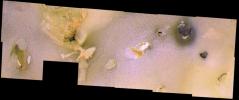
|
-
PIA02566:
-
Io's Chain of Craters
Full Resolution:
TIFF
(1.389 MB)
JPEG
(93.06 kB)
|

|
2000-10-26 |
Io
|
Galileo
|
Solid-State Imaging
|
413x900x3 |

|
-
PIA02567:
-
Giant Lava Flow on Io, in Color
Full Resolution:
TIFF
(1.187 MB)
JPEG
(44.4 kB)
|

|
2000-10-26 |
Io
|
Galileo
|
Solid-State Imaging
|
1152x564x1 |
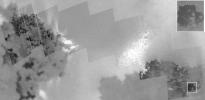
|
-
PIA02568:
-
Galileo Takes a Close-up Look at Prometheus
Full Resolution:
TIFF
(209.3 kB)
JPEG
(67.37 kB)
|

|
2000-12-16 |
Ganymede
|
Galileo
|
Solid-State Imaging
|
2000x2300x1 |

|
-
PIA02571:
-
Ganymede Dark Terrain at High Resolution
Full Resolution:
TIFF
(3.771 MB)
JPEG
(838.9 kB)
|

|
2000-12-16 |
Ganymede
|
Galileo
|
Solid-State Imaging
|
2603x756x1 |

|
-
PIA02572:
-
Region of Ganymede with Mix of Terrains
Full Resolution:
TIFF
(2.166 MB)
JPEG
(451.2 kB)
|

|
2000-12-16 |
Ganymede
|
Galileo
|
Solid-State Imaging
|
1249x1939x1 |

|
-
PIA02573:
-
Regional View of Bright and Dark Terrain
Full Resolution:
TIFF
(2.894 MB)
JPEG
(598.8 kB)
|

|
2000-12-16 |
Ganymede
|
Galileo
|
Solid-State Imaging
|
1026x1748x1 |

|
-
PIA02574:
-
Ganymede Feature Resembling Europa
Full Resolution:
TIFF
(1.687 MB)
JPEG
(378.7 kB)
|

|
2000-12-16 |
Ganymede
|
Galileo
|
Solid-State Imaging
|
2514x1929x1 |
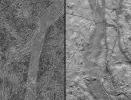
|
-
PIA02575:
-
Comparison of Ganymede and Europa features
Full Resolution:
TIFF
(5.617 MB)
JPEG
(1.04 MB)
|

|
2000-12-16 |
Ganymede
|
Galileo
|
Solid-State Imaging
|
1000x751x1 |
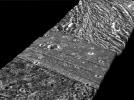
|
-
PIA02576:
-
Perspective view of Arbela Sulcus, Ganymede
Full Resolution:
TIFF
(561.9 kB)
JPEG
(118.7 kB)
|

|
2000-12-16 |
Ganymede
|
Galileo
|
Solid-State Imaging
|
1764x809x1 |
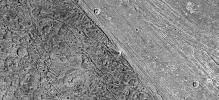
|
-
PIA02577:
-
Bright-Dark Terrain Boundary, Ganymede
Full Resolution:
TIFF
(1.508 MB)
JPEG
(364.7 kB)
|

|
2000-12-16 |
Ganymede
|
Galileo
|
Solid-State Imaging
|
1228x512x3 |
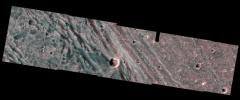
|
-
PIA02578:
-
Bright-Dark Terrain Boundary in stereo
Full Resolution:
TIFF
(1.147 MB)
JPEG
(90.2 kB)
|

|
2000-12-16 |
Ganymede
|
Galileo
|
Solid-State Imaging
|
1358x1098x3 |

|
-
PIA02579:
-
Bright-dark boundary and topographical model
Full Resolution:
TIFF
(2.085 MB)
JPEG
(273.1 kB)
|

|
2000-12-16 |
Ganymede
|
Galileo
|
Solid-State Imaging
|
3777x2760x1 |
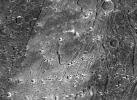
|
-
PIA02580:
-
Caldera-like depression on Ganymede
Full Resolution:
TIFF
(7.14 MB)
JPEG
(1.173 MB)
|

|
2000-12-16 |
Ganymede
|
Galileo
|
Solid-State Imaging
|
3328x2330x1 |
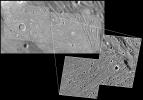
|
-
PIA02581:
-
Not-so-smooth Bright Terrain of Harpagia Sulcus
Full Resolution:
TIFF
(4.338 MB)
JPEG
(966.7 kB)
|

|
2000-12-16 |
Ganymede
|
Galileo
|
Solid-State Imaging
|
795x767x1 |
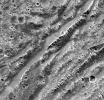
|
-
PIA02582:
-
Stair-step Scarps in Dark Terrain on Ganymede
Full Resolution:
TIFF
(615.6 kB)
JPEG
(143.8 kB)
|

|
2000-12-17 |
Ganymede
|
Galileo
|
Solid-State Imaging
|
512x384x1 |
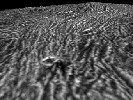
|
-
PIA02583:
-
Arbela Sulcus Flyover Movie

Full Resolution:
|

|
2001-02-26 |
Io
|
Galileo
|
Solid-State Imaging
|
1270x660x3 |
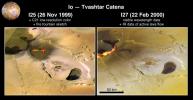
|
-
PIA02584:
-
Eruption at Tvashtar Catena on Io
Full Resolution:
TIFF
(1.901 MB)
JPEG
(114.5 kB)
|

|
2001-02-23 |
Io
|
Galileo
|
Solid-State Imaging
|
4000x2500x3 |
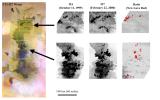
|
-
PIA02585:
-
Amirani's Big Lava Flow on Io
Full Resolution:
TIFF
(12.55 MB)
JPEG
(619.1 kB)
|

|
2001-02-23 |
Io
|
Galileo
|
Solid-State Imaging
|
3347x2531x1 |
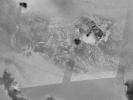
|
-
PIA02586:
-
Tohil Mons, Io
Full Resolution:
TIFF
(5.223 MB)
JPEG
(602.5 kB)
|

|
2001-03-29 |
Io
|
Cassini-Huygens
Galileo
|
Solid-State Imaging
|
1100x900x3 |
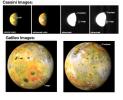
|
-
PIA02588:
-
Galileo and Cassini Image Two Giant Plumes on Io
Full Resolution:
TIFF
(1.374 MB)
JPEG
(96.56 kB)
|

|
2001-06-22 |
Europa
|
Galileo
|
Solid-State Imaging
|
536x900x3 |

|
-
PIA02590:
-
Europa's Frozen Surface
Full Resolution:
TIFF
(1.322 MB)
JPEG
(111.1 kB)
|

|
2001-10-04 |
Io
|
Galileo
|
Solid-State Imaging
|
690x254x3 |
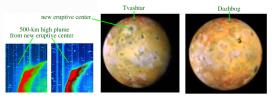
|
-
PIA02592:
-
Northern Plume and Plume Deposits on Io
Full Resolution:
TIFF
(297.1 kB)
JPEG
(27.59 kB)
|

|
2001-11-29 |
Callisto
|
Galileo
|
Solid-State Imaging
|
1280x774x1 |
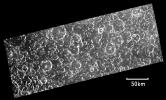
|
-
PIA02593:
-
Opposite Side of Callisto from Valhalla Impact
Full Resolution:
TIFF
(609.1 kB)
JPEG
(121.2 kB)
|

|
2001-11-27 |
Io
|
Galileo
|
Solid-State Imaging
|
800x623x3 |
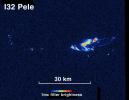
|
-
PIA02596:
-
Io's Pele Glowing in the Dark
Full Resolution:
TIFF
(471.9 kB)
JPEG
(98.62 kB)
|

|
2001-11-27 |
Io
|
Galileo
|
Solid-State Imaging
|
798x401x1 |
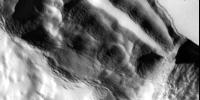
|
-
PIA02597:
-
Slumping Cliff on Io in High Resolution
Full Resolution:
TIFF
(309.9 kB)
JPEG
(41.94 kB)
|

|
2001-12-10 |
Io
|
Galileo
|
Solid-State Imaging
|
5065x3361x1 |
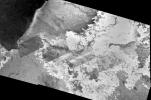
|
-
PIA02598:
-
Lava Channel at Io's Emakong Patera
Full Resolution:
TIFF
(12.18 MB)
JPEG
(1.129 MB)
|

|
2001-12-10 |
Io
|
Galileo
|
Solid-State Imaging
|
736x680x3 |
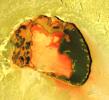
|
-
PIA02599:
-
Colorful Tupan Patera, Io
Full Resolution:
TIFF
(1.55 MB)
JPEG
(68.25 kB)
|

|
2000-08-11 |
Europa
|
Galileo
|
Solid-State Imaging
|
3116x2652x1 |
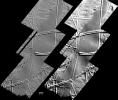
|
-
PIA02960:
-
Folds on Europa
Full Resolution:
TIFF
(3.943 MB)
JPEG
(775.9 kB)
|

|
2000-09-25 |
Jupiter
|
Galileo
|
Solid-State Imaging
|
4306x3306x3 |
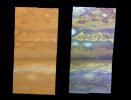
|
-
PIA03000:
-
Atmospheric Motion in Jupiter's Northern Hemisphere
Full Resolution:
TIFF
(22.55 MB)
JPEG
(540 kB)
|

|
2000-09-25 |
J Rings
|
Galileo
|
Solid-State Imaging
|
4306x3306x3 |
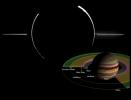
|
-
PIA03001:
-
Jovian Ring System Mosaic
Full Resolution:
TIFF
(3.623 MB)
JPEG
(338.8 kB)
|

|
2000-09-25 |
Europa
|
Galileo
|
Solid-State Imaging
|
4306x3306x3 |
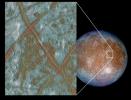
|
-
PIA03002:
-
Blocks in the Europan Crust Provide More Evidence of Subterranean Ocean
Full Resolution:
TIFF
(33.29 MB)
JPEG
(1.296 MB)
|

|
2002-10-30 |
Europa
|
Galileo
|
Solid-State Imaging
|
849x660x3 |
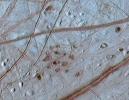
|
-
PIA03878:
-
Ruddy "Freckles" on Europa
Full Resolution:
TIFF
(1.683 MB)
JPEG
(132 kB)
|

|
2001-03-13 |
Ganymede
|
Galileo
|
Solid-State Imaging
|
1078x636x3 |
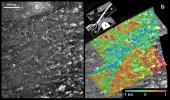
|
-
PIA03214:
-
Sippar Sulcus, Ganymede
Full Resolution:
TIFF
(1.332 MB)
JPEG
(255 kB)
|

|
2001-03-13 |
Ganymede
|
Galileo
|
Solid-State Imaging
|
328x450x3 |

|
-
PIA03215:
-
Erech Sulcus, Ganymede
Full Resolution:
TIFF
(141.7 kB)
JPEG
(35.15 kB)
|

|
2001-03-13 |
Ganymede
|
Galileo
|
Solid-State Imaging
|
404x294x1 |
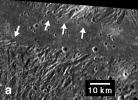
|
-
PIA03216:
-
Ridges and Troughs in Sippar Sulcus, Ganymede
Full Resolution:
TIFF
(96.07 kB)
JPEG
(28.92 kB)
|

|
2001-03-13 |
Ganymede
|
Galileo
|
Solid-State Imaging
|
542x425x1 |

|
-
PIA03217:
-
Caldera in Sippar Sulcus, Ganymede
Full Resolution:
TIFF
(245.7 kB)
JPEG
(57.36 kB)
|

|
2001-03-13 |
Ganymede
|
Galileo
|
Solid-State Imaging
|
1089x842x1 |
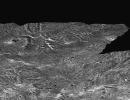
|
-
PIA03218:
-
Ganymede Topography
Full Resolution:
TIFF
(586.4 kB)
JPEG
(182.9 kB)
|

|
2001-08-22 |
Callisto
|
Galileo
|
Solid-State Imaging
|
2000x1510x1 |
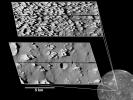
|
-
PIA03455:
-
Callisto Close-up with Jagged Hills
Full Resolution:
TIFF
(1.625 MB)
JPEG
(311.7 kB)
|

|
2001-08-22 |
Callisto
|
Galileo
|
Solid-State Imaging
|
740x753x3 |

|
-
PIA03456:
-
Global Callisto in Color
Full Resolution:
TIFF
(1.219 MB)
JPEG
(73.69 kB)
|

|
2002-05-28 |
Io
|
Galileo
|
Solid-State Imaging
|
1174x1024x1 |
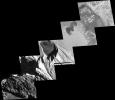
|
-
PIA03527:
-
Detailed View of Mountain and Craters at Tohil, Io
Full Resolution:
TIFF
(227.7 kB)
JPEG
(98.12 kB)
|

|
2002-05-28 |
Io
|
Galileo
|
Solid-State Imaging
|
1280x963x1 |
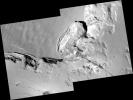
|
-
PIA03528:
-
Collapsing Cliff at Telegonus Mensa, Io
Full Resolution:
TIFF
(301.6 kB)
JPEG
(105 kB)
|

|
2002-05-28 |
Io
|
Galileo
|
Solid-State Imaging
|
1280x866x1 |
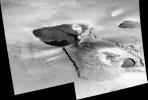
|
-
PIA03529:
-
Galileo's Last View of Tvashtar, Io
Full Resolution:
TIFF
(381.9 kB)
JPEG
(149.2 kB)
|

|
2002-05-28 |
Io
|
Galileo
|
Solid-State Imaging
|
800x800x1 |
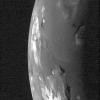
|
-
PIA03530:
-
Galileo's Best View of Loki Volcano on Io
Full Resolution:
TIFF
(477.5 kB)
JPEG
(89.71 kB)
|

|
2002-05-28 |
Io
|
Galileo
|
Solid-State Imaging
|
1280x929x1 |
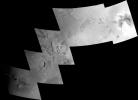
|
-
PIA03531:
-
New plume vent near Zamama, Io
Full Resolution:
TIFF
(197.7 kB)
JPEG
(71.94 kB)
|

|
2002-05-28 |
Io
|
Galileo
|
Solid-State Imaging
|
1122x842x1 |
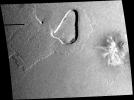
|
-
PIA03532:
-
Volcanic Depression and Shield Volcano, Io
Full Resolution:
TIFF
(885.6 kB)
JPEG
(142.7 kB)
|

|
2001-12-10 |
Io
|
Galileo
|
Solid-State Imaging
|
954x1035x1 |

|
-
PIA03600:
-
Tall Mountain, Tohil Mons, on Io
Full Resolution:
TIFF
(687.7 kB)
JPEG
(120.4 kB)
|

|
2002-12-06 |
Io
|
Galileo
|
Solid-State Imaging
|
1262x1043x1 |
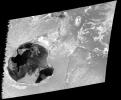
|
-
PIA03884:
-
Recent Eruption at Gish Bar Patera on Io
Full Resolution:
TIFF
(985.7 kB)
JPEG
(145.8 kB)
|

|
2002-12-06 |
Io
|
Galileo
|
Solid-State Imaging
|
1907x2955x3 |

|
-
PIA03885:
-
Io's Culann-Tohil Region in Color
Full Resolution:
TIFF
(14.78 MB)
JPEG
(594.4 kB)
|

|
2002-12-06 |
Io
|
Galileo
|
Solid-State Imaging
|
798x561x1 |
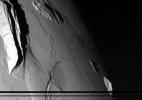
|
-
PIA03886:
-
Mountains on Io at Sunset
Full Resolution:
TIFF
(399.8 kB)
JPEG
(51.89 kB)
|

|
2002-12-06 |
Io
|
Galileo
|
Solid-State Imaging
|
4200x3200x3 |
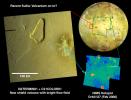
|
-
PIA03887:
-
Potential Source of Sulfur Flow on Io
Full Resolution:
TIFF
(22.3 MB)
JPEG
(947.9 kB)
|

|
2002-12-06 |
Io
|
Galileo
|
Solid-State Imaging
|
720x431x3 |
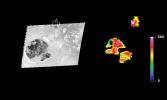
|
-
PIA03888:
-
Io's Gish Bar Volcanic Region in Infrared
Full Resolution:
TIFF
(140.8 kB)
JPEG
(24.83 kB)
|

|
2004-08-13 |
Ganymede
|
Galileo
|
Solid-State Imaging
|
720x540x3 |
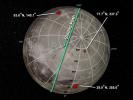
|
-
PIA05077:
-
Lumps Within Ganymede
Full Resolution:
TIFF
(703.9 kB)
JPEG
(61.89 kB)
|

|
2005-05-31 |
Amalthea
|
Galileo
Voyager
|
Solid-State Imaging
|
1800x541x3 |

|
-
PIA07248:
-
Amalthea, A Rubble-Pile Moon
Full Resolution:
TIFF
(2.926 MB)
JPEG
(42.38 kB)
|

|
2007-04-02 |
Io
|
Galileo
Voyager
|
Solid-State Imaging
|
11445x3643x3 |

|
-
PIA09257:
-
Io in Motion

Full Resolution:
TIFF
(125.1 MB)
JPEG
(3.431 MB)
|

|
2011-03-31 |
J Rings
|
Galileo
|
Solid-State Imaging
|
715x781x1 |

|
-
PIA13893:
-
Subtle Ripples in Jupiter's Ring
Full Resolution:
TIFF
(559.2 kB)
JPEG
(66.54 kB)
|

|
2013-03-05 |
Europa
|
Galileo
|
Solid-State Imaging
|
4200x5814x3 |

|
-
PIA16827:
-
Repeated Flybys Yield a Pole-to-Pole View of Europa
Full Resolution:
TIFF
(73.3 MB)
JPEG
(2.891 MB)
|

|
2013-11-25 |
Europa
|
Galileo
|
Solid-State Imaging
|
603x433x3 |
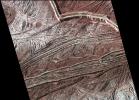
|
-
PIA17737:
-
Cracks and Ridges on Europa
Full Resolution:
TIFF
(783.8 kB)
JPEG
(64.1 kB)
|

|
2014-07-08 |
Europa
|
Galileo
|
Solid-State Imaging
|
766x750x3 |
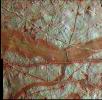
|
-
PIA18413:
-
Reddish Bands on Europa
Full Resolution:
TIFF
(1.724 MB)
JPEG
(200.8 kB)
|

|
2016-05-17 |
Europa
|
Galileo
|
Solid-State Imaging
|
1252x2448x3 |

|
-
PIA20028:
-
Europa's Varied Surface Features
Full Resolution:
TIFF
(9.198 MB)
JPEG
(825 kB)
|

|
2017-02-08 |
Europa
|
Galileo
|
Solid-State Imaging
|
1338x2619x1 |

|
-
PIA21431:
-
Highest-resolution Europa Image & Mosaic from Galileo
Full Resolution:
TIFF
(1.724 MB)
JPEG
(350 kB)
|

|
2019-04-11 |
Europa
|
Galileo
|
Solid-State Imaging
|
1557x1093x3 |
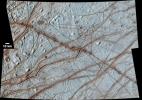
|
-
PIA23166:
-
Europa's Rhadamanthys Linea
Full Resolution:
TIFF
(5.071 MB)
JPEG
(380.3 kB)
|

|
2023-04-14 |
Europa
|
Galileo
|
Solid-State Imaging
|
400x400x1 |
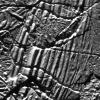
|
-
PIA25498:
-
Europa Close-Up
Full Resolution:
TIFF
(160.4 kB)
JPEG
(40.6 kB)
|

|
2023-04-14 |
Europa
|
Galileo
|
Solid-State Imaging
|
360x360x1 |
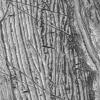
|
-
PIA25499:
-
Europa's Surface: Up-Close Topography
Full Resolution:
TIFF
(130 kB)
JPEG
(35.73 kB)
|

|
2024-10-02 |
Europa
|
Galileo
|
Solid-State Imaging
|
1024x425x3 |
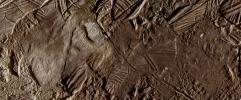
|
-
PIA26446:
-
Conamara Color Closeup
Full Resolution:
TIFF
(1.306 MB)
JPEG
(112.2 kB)
|

|
1998-01-21 |
Europa
|
Galileo
|
Photopolarimeter-Radiometer
|
987x1459x3 |

|
-
PIA01144:
-
Daytime Temperatures on Europa
Full Resolution:
TIFF
(2.196 MB)
JPEG
(111.3 kB)
|

|
1998-01-21 |
Ganymede
|
Galileo
|
Photopolarimeter-Radiometer
|
988x1330x3 |

|
-
PIA01145:
-
Pre-Dawn Temperatures on Ganymede
Full Resolution:
TIFF
(1.71 MB)
JPEG
(81.35 kB)
|

|
1998-01-21 |
Ganymede
|
Galileo
|
Photopolarimeter-Radiometer
|
988x1233x3 |

|
-
PIA01146:
-
Nighttime Temperatures on Ganymede
Full Resolution:
TIFF
(1.924 MB)
JPEG
(127.5 kB)
|

|
1998-04-02 |
Ganymede
|
Galileo
|
Photopolarimeter-Radiometer
|
432x540x3 |

|
-
PIA01232:
-
Temperature Map of Ganymede
Full Resolution:
TIFF
(422.9 kB)
JPEG
(29.2 kB)
|

|
1998-04-02 |
Jupiter
|
Galileo
|
Photopolarimeter-Radiometer
|
468x604x3 |

|
-
PIA01233:
-
Photopolarimeter/Radiometer (PPR) Temperature Map of Great Red Spot
Full Resolution:
TIFF
(340.9 kB)
JPEG
(32.65 kB)
|

|
1998-04-02 |
Jupiter
|
Galileo
|
Photopolarimeter-Radiometer
|
429x585x3 |

|
-
PIA01234:
-
PPR Great Red Spot Temperature Map
Full Resolution:
TIFF
(65.49 kB)
JPEG
(30.68 kB)
|

|
1998-12-07 |
Jupiter
|
Galileo
|
Photopolarimeter-Radiometer
|
1500x2571x3 |

|
-
PIA01496:
-
Jovian Dark Spot
Full Resolution:
TIFF
(2.798 MB)
JPEG
(143.5 kB)
|

|
2000-05-18 |
Io
|
Galileo
|
Photopolarimeter-Radiometer
|
710x746x3 |

|
-
PIA02546:
-
Sulfur Gas in Pele's Plume
Full Resolution:
TIFF
(544.7 kB)
JPEG
(42.15 kB)
|

|
2000-05-18 |
Io
|
Galileo
|
Photopolarimeter-Radiometer
|
1225x827x3 |

|
-
PIA02547:
-
The Role of Sulfur in Io's Volcanoes
Full Resolution:
TIFF
(1.611 MB)
JPEG
(75.39 kB)
|

|
2001-06-22 |
Io
|
Galileo
|
Photopolarimeter-Radiometer
|
1157x574x3 |
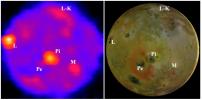
|
-
PIA02589:
-
Io's Nighttime Heat
Full Resolution:
TIFF
(1.384 MB)
JPEG
(51.07 kB)
|

|
2001-12-10 |
Io
|
Galileo
|
Photopolarimeter-Radiometer
|
1655x1339x3 |
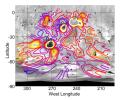
|
-
PIA03603:
-
Nighttime Temperatures on Southern Io
Full Resolution:
TIFF
(2.642 MB)
JPEG
(344.3 kB)
|

|
1997-09-23 |
Jupiter
|
Galileo
|
Photopolarimeter Subsystem
|
807x700x3 |
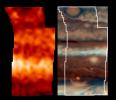
|
-
PIA00730:
-
Jupiter's Temperatures--Broad Latitude
Full Resolution:
TIFF
(1.011 MB)
JPEG
(42.99 kB)
|

|
1997-09-24 |
Jupiter
|
Galileo
|
Photopolarimeter Subsystem
|
585x376x3 |
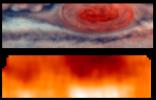
|
-
PIA00731:
-
Jovian Temperatures--Highest Resolution
Full Resolution:
TIFF
(447.1 kB)
JPEG
(17.9 kB)
|

|
1997-09-29 |
Jupiter
|
Galileo
|
Photopolarimeter Subsystem
|
875x605x3 |
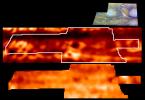
|
-
PIA00732:
-
Jupiter's Temperatures
Full Resolution:
TIFF
(771.1 kB)
JPEG
(49.91 kB)
|

|
1998-03-26 |
Ganymede
|
Galileo
|
Near Infrared Mapping Spectrometer
|
1950x1500x3 |
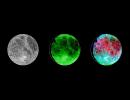
|
-
PIA00500:
-
NIMS Ganymede Surface Map
Full Resolution:
TIFF
(1.156 MB)
JPEG
(170.1 kB)
|

|
1998-03-26 |
Jupiter
|
Galileo
|
Near Infrared Mapping Spectrometer
|
233x506x3 |

|
-
PIA00501:
-
NIMS Spectral Maps of Jupiter's Great Red Spot
Full Resolution:
TIFF
(261.8 kB)
JPEG
(14.41 kB)
|

 Planetary Data System
Planetary Data System


















































































































